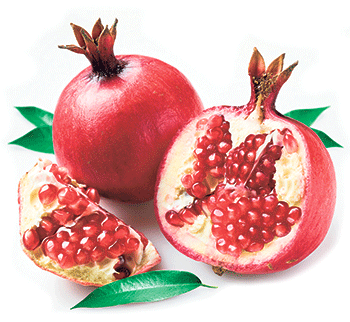We are soon celebrating Tu b’Shvat, the New Year of the trees, which begins at sundown on Feb. 3. Tu b’Shvat has a long and interesting history, and, for Jewish cooks, is laden with delicious possibilities.
Tu b’Shvat translates to the 15th day of the month of Shvat. But why do we celebrate this agricultural festival in the dead of winter? In ancient times in Israel, the holiday marked the end of the rainy season and thus closed the fiscal year for calculating taxes, the tithes (bikkurim, or “first fruits”) offered to the priests.
With the destruction of the Temple and the exile and with none of our own fruit to tithe, the holiday went into dormancy, only to bloom again centuries later when talmudic rabbis used it to calculate the age of fruit-bearing trees and thus the proper date of harvest. After the expulsion of the Jews from Spain in 1492, kabbalists in Safed infused the holiday with mystical significance.
It is customary to plan a Tu b’Shvat menu around the Seven Species (Shivat Haminim), the grains and fruits named in the Torah (Deuteronomy, 8:8), which were staples of our ancient ancestors: wheat, barley, grapes (and wine), figs, pomegranates, olives (and olive oil) and dates. (Note: The Bible actually refers to honey as the seventh of the these, meaning palm date honey, not honey produced by bees.)
Some communities observe a Tu b’Shvat seder (who can wait for Passover?), which includes the drinking of four cups of wine and readings from various Jewish sources. (For a guide to conducting your own Tu b’Shvat seder, go to hillel.org or mazon.org.)
Bread would be the obvious choice for including wheat, but the serving of couscous, popular in the Mediterranean since the Middle Ages, seems most appropriate for this holiday. Substitute bulgur for the couscous, if you like.
The pomegranate has been revered since biblical times as a symbol of fertility, good health and immortality. Celebrated by King Solomon in the Song of Songs, this tangy, many-seeded fruit with its crimson-hued, leathery shell was abundant in the Garden of Eden and is even thought by some scholars to have been the real “apple” that tempted Eve. The seeds of the pomegranate supposedly add up to 613, which represent the mitzvot (good deeds) of the Torah, but I don’t know anyone who has tried to count them.
Remove the seeds under water and save your clothes. Or purchase the arils already seeded, if you can find them at some markets or online.
